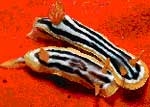The three-eyed dinosaur shrimp, also known as the long-tailed tadpole shrimp, has inhabited the Earth for 300 million years.
Unique Characteristics and Living Conditions of the Three-Eyed Dinosaur Shrimp
Three hundred million years ago, a strange creature was born on Earth – the three-eyed dinosaur shrimp (scientific name Triops longicaudatus, also known as American tadpole shrimp, rice tadpole shrimp). To this day, they still exist and are considered a living fossil because their prehistoric morphology has changed very little over the past 70 million years. With unique characteristics and remarkable survival abilities, this creature has become a witness to the age of dinosaurs and represents the magical survival of ancient times.
The most distinctive feature of the three-eyed dinosaur shrimp is its three eyes on its head, with two eyes located on either side of its head and the third eye positioned on the top. This structure enhances the shrimp’s ability to observe and react to the external world. The three-eyed dinosaur shrimp also possesses a hard exoskeleton and strong claws, enabling it to adapt better to complex underwater environments.
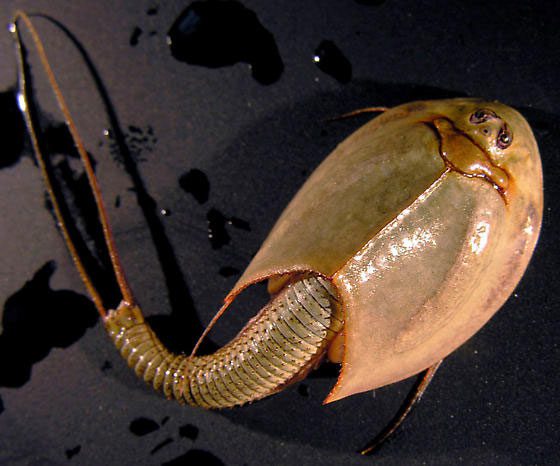
This living fossil has attracted the attention of scientists due to its importance in the study of biological evolution, environmental changes on Earth, and biodiversity research. (Photo: Zhihu).
With its unique appearance and adaptability, the three-eyed dinosaur shrimp had significant survival advantages during the age of dinosaurs. The presence of three eyes allows it to better perceive potential dangers and opportunities, as well as to provide early warnings of threats from predators. Its hard exoskeleton offers solid protection, while strong claws enable it to hunt more effectively and adapt to its environment.
A Shrimp Species with Eggs That Can Survive 50 Years Without Water
The dinosaur shrimp can secrete trehalose – a waterproof sugar that helps keep its eggs safe in water. If the habitat does not dry out, the eggs will hatch, continuing the life cycle. Conversely, they will remain in a dormant state until conditions become suitable. Their eggs are superhard, capable of withstanding extreme conditions, whether hot, freezing, or low in oxygen. If laid in the desert, even under temperatures reaching 98 degrees Celsius, their eggs can endure for up to 16 hours, and at temperatures between 40-50 degrees Celsius, the eggs remain unaffected.
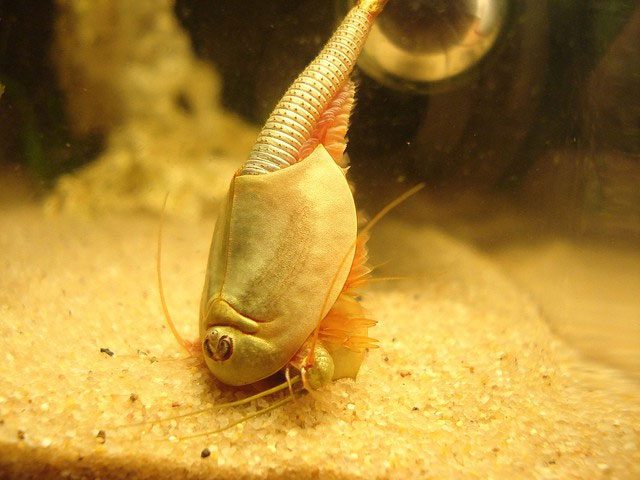
The three-eyed dinosaur shrimp can reproduce both sexually and asexually. (Photo: Pinterest).
Notably, the eggs of the dinosaur shrimp can survive for 50 years without water. Afterward, the eggs remain “alive” until it rains and water is available, at which point they will hatch. Once hatched, they consume all smaller organisms in sight, eating an amount equivalent to 40% of their body weight each day. Due to continuous feeding, they grow rapidly; when newly hatched, the dinosaur shrimp measures only up to 1.8 mm, but within four days, it can grow to 6.4 mm. In about 2-3 weeks, the young dinosaur shrimp reaches maturity, ready for reproduction.
The three-eyed dinosaur shrimp also has strong reproductive and adaptive capabilities. They can reproduce quickly and adapt to changes in maritime environments and different food sources. This characteristic allows them to both survive and reproduce in large quantities during the age of dinosaurs.
As representatives of the creatures from the age of dinosaurs, the three-eyed dinosaur shrimp have become witnesses to the miraculous survival of ancient organisms with their unique traits and adaptation abilities. Their existence reveals the diversity and complexity of ecosystems during the dinosaur era while providing crucial insights into our understanding of the ancient Earth’s environment.
Through the study of the three-eyed dinosaur shrimp, we can gain a deeper understanding of the evolutionary pathways of organisms throughout Earth’s history, while also offering valuable insights for the conservation of modern species and the development of future organisms.
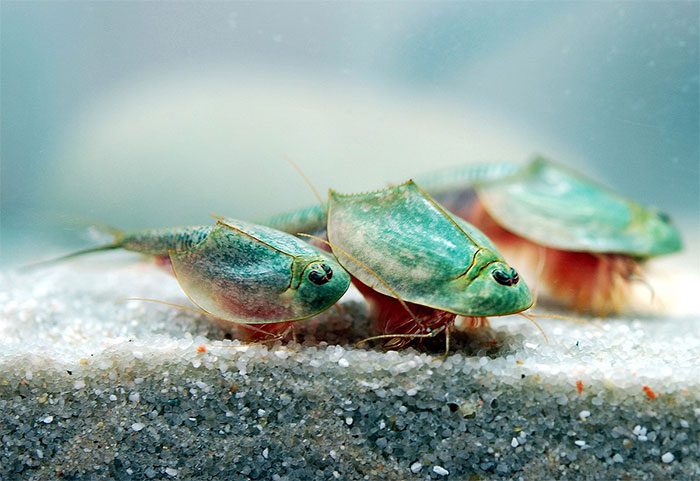
Through the study of living fossils, we can gain deeper insights into the evolutionary processes of life and the changes, evolution of the Earth’s environment, contributing to the progress and sustainable development of humanity. (Photo: Zhihu).
Significance and Research Value of Living Fossils
Living fossils are close relatives or direct descendants of an extinct type of organism, and their remaining forms closely resemble ancient species, thus they are referred to as “living fossils.” Naturally, living fossils have attracted the attention of scientists due to their long-standing existence on the geological timeline and their importance in studying biological evolution and environmental change.
Living fossils can provide important clues for researching biological evolution. By comparing anatomical differences, gene structures, etc., between modern living fossils and their ancient relatives, scientists can reveal the patterns of organisms’ adaptations to environmental changes and evolutionary developments.
The three-eyed dinosaur shrimp is one of the oldest organisms on Earth and its living fossil can provide extensive information about changes in marine environments and the adaptability of species. Living fossils also offer crucial support for studying the evolution of species and biological classification, helping scientists clarify biological relationships and infer the origins and evolutionary history of species.
Living fossils record geological and climatic changes over millions of years, helping us reconstruct the ecosystems of ancient Earth. For example, fossils of ancient fish can provide valuable information about water quality and ancient aquatic environments, aiding scientists in understanding the ecological evolution processes and environmental changes of ancient waters, including land uplift and subsidence, climate changes, etc.
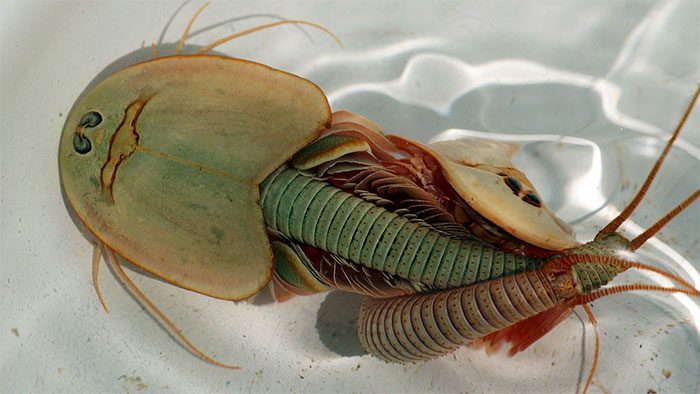
The three-eyed dinosaur shrimp has developed a unique yet astonishing characteristic during the evolutionary process: the third eye. (Photo: Zhihu).
Living fossils are also crucial for biodiversity research. Fossil populations often represent “survivors” in specific environmental conditions and have the ability to adapt to environmental changes and endure after mass extinction events. By studying living fossils, scientists can uncover how species respond to environmental changes and extinction events, helping us to better understand the origins and mechanisms for maintaining biodiversity.
Moreover, living fossils represent a valuable natural and cultural heritage on Earth; their existence is irreplaceable for humanity’s understanding of the origins of life and the evolutionary process of the Earth. Protecting and researching living fossils can not only promote scientific progress but also enhance human awareness of ecological conservation and foster sustainable development.
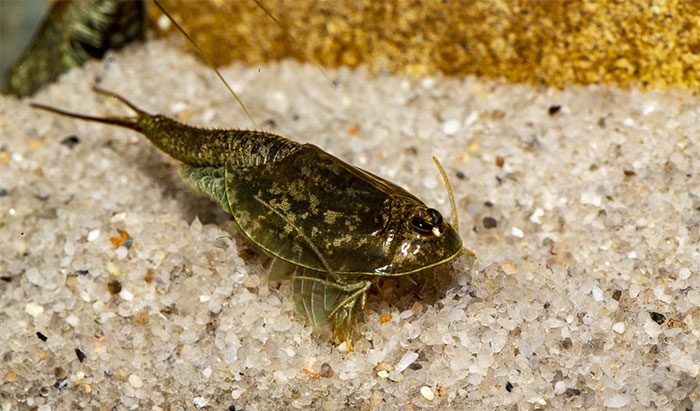
The third eye of the three-eyed dinosaur shrimp is located in the center of the head. This eye can sense radiations such as ultraviolet and infrared, providing a wider field of vision and sharper perception. (Photo: Zhihu).
The Process of Understanding the Three-Eyed Dinosaur Shrimp is Significant for the Evolution of Life on Earth
There are many types of organisms on Earth, and the evolution of organisms is a continuous process. The remnants of the dinosaur era allow us to glimpse the mysteries of the creatures of that time, and the recently discovered three-eyed dinosaur shrimp has provided us with new perspectives on the evolutionary process of life on Earth. This peculiar creature has sparked extensive scientific discussions and illuminated new understandings of biological evolutionary processes.
The three-eyed dinosaur shrimp has developed a unique yet astonishing feature during the evolutionary process: the third eye. This characteristic demonstrates the immense diversity that evolution has created in the forms and functions of organisms. It reminds us that evolution is a multidimensional process; while organisms adapt to their environments, they also develop new traits to respond to environmental changes.
The third eye of the three-eyed dinosaur shrimp is located right in the center of its head. This eye can sense radiation such as ultraviolet and infrared rays, providing a broader field of vision and sharper perception. This ability allows it to search for food more effectively and avoid predators in complex environments. This characteristic reveals the organism’s adaptability to its environment during the evolutionary process, enhancing its survival skills by adjusting to environmental changes.
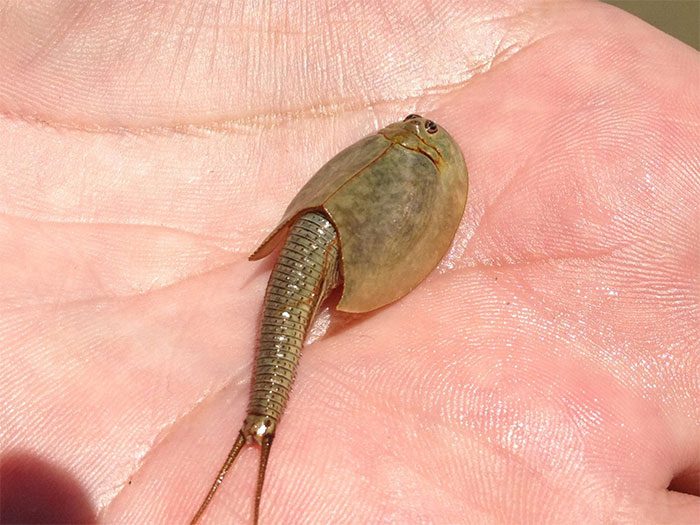
Throughout the evolutionary process, organisms adapt to environmental changes through morphological changes to maintain ecological balance. (Image: Zhihu).
The traits of the three-eyed dinosaur shrimp are not just isolated expressions but are the result of genetic mechanisms. Scientists have discovered a gene mutation that causes changes in the shape and function of the eye. The discovery and analysis of this genetic mechanism provide valuable clues for studying the genetic basis of biological evolution, while also helping us gain a better understanding of the mechanisms of biological evolution.
The emergence of the three-eyed dinosaur shrimp reminds us that biodiversity and adaptability are crucial for maintaining the stability and health of ecosystems. If a species cannot adapt due to environmental changes, the entire ecosystem may be affected, leading to a disruption of ecological balance.
The discovery of the three-eyed dinosaur shrimp offers a new perspective for exploring the evolutionary process of life on Earth. Through in-depth research on the morphology, characteristics, and genetic mechanisms of this unique organism, we can better understand the importance of diversity, adaptability, and ecological balance in biological evolution.
- The sour-sweet fruit comparable to ‘natural insulin’ that helps lower blood sugar and effectively strengthens bones
- If the size of Earth is 1 cm, how big would the largest star in the universe be?
- Mysterious experiment unveils the curtain of time and space: Unexpectedly discovering a creature observing humans!










































